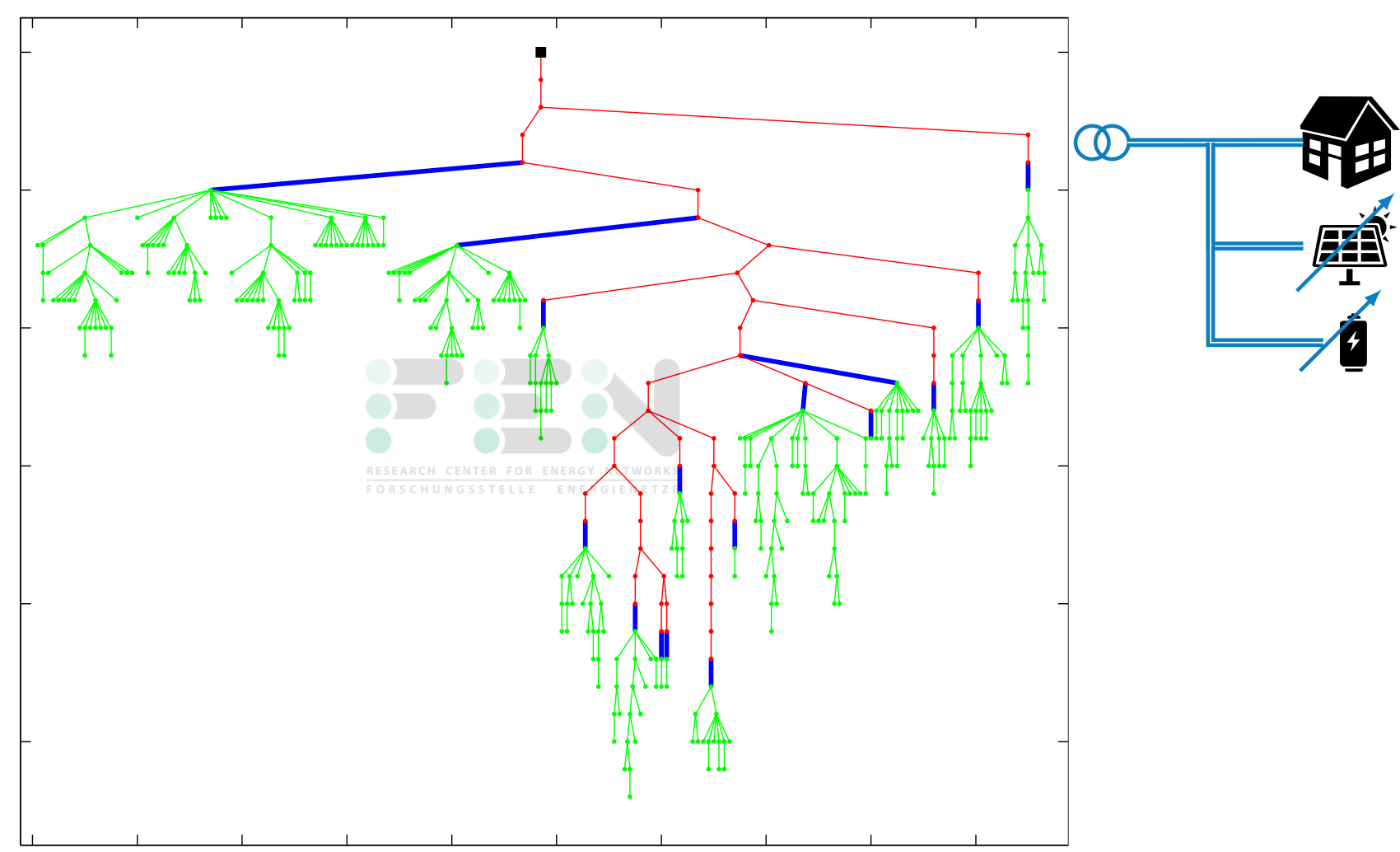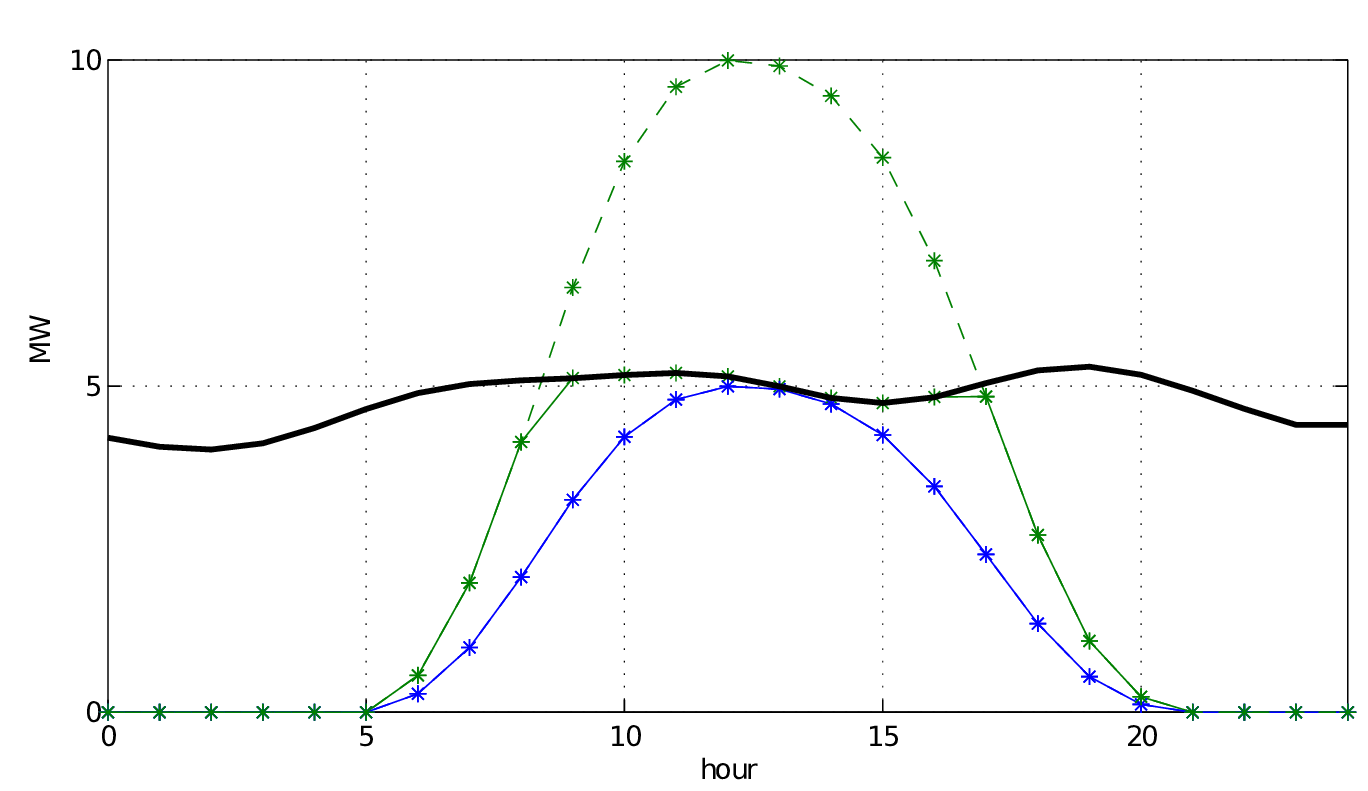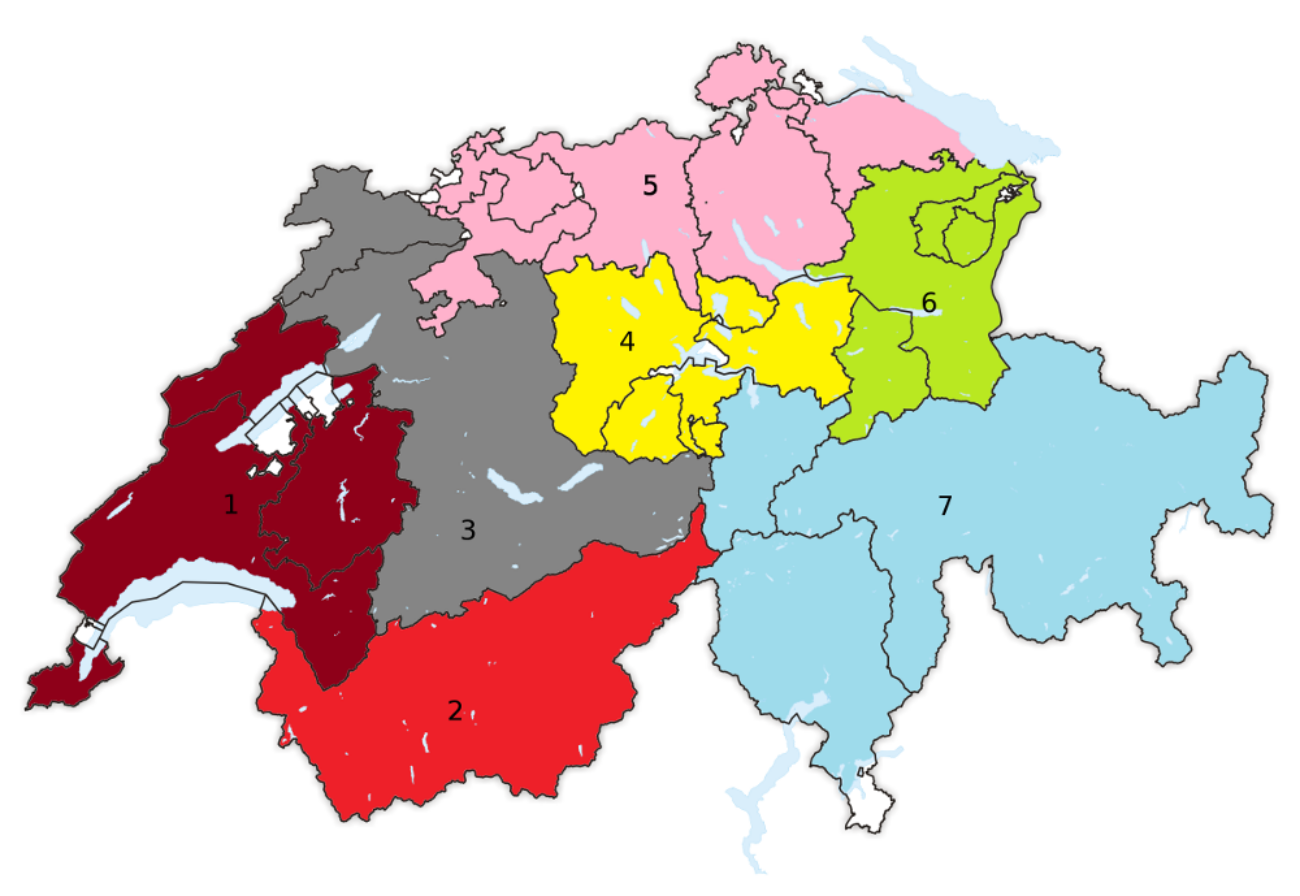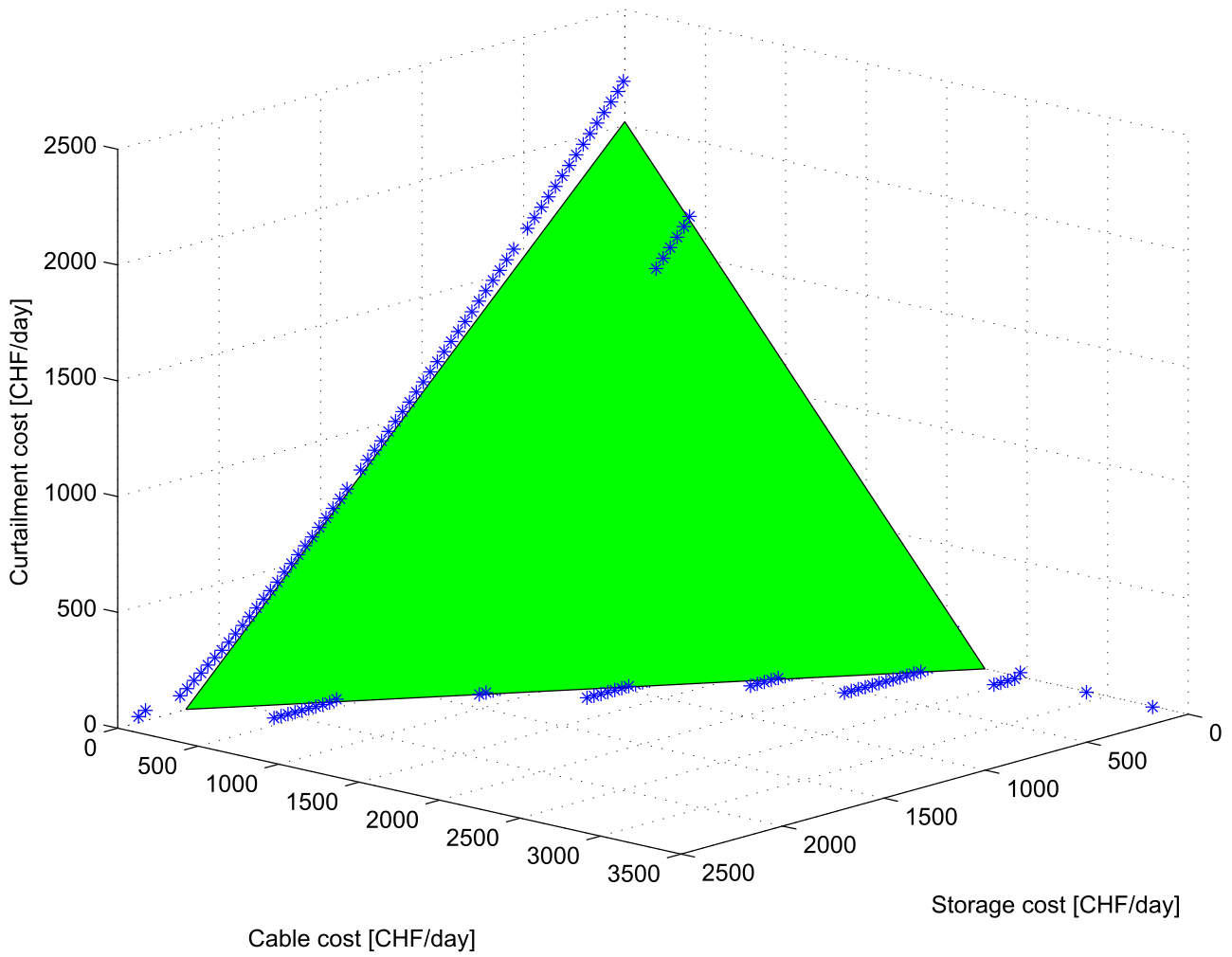ISCHESS Integration of stochastic renewables in the CH electricity supply system
- What is the tradeoff between different integration strategies (grid upgrade, renewable curtailment, DSM, battery storages) for RES in the distribution grid (Figure)? How should storages be placed and operated?
- Which capacity and network expansion are required to achieve the global goals of the Energy Strategy 2050 on the transmission grid level? What is the impact on prices, CO2, imports and generation portfolio?

Distribution grid with high RES penetration and controllability through distributed battery storages and curtailment of PV-sources.
- Integration of large scale renewable energy sources in the Swiss electricity system leads to transition in both the distribution grid (Figure) and the transmission grid.
- Interdisciplinary challenges from stochasticity and seasonality; opportunity from flexibility and novel control approaches

Distribution grid example time profile: Maximum grid capacity (black), maximum PV-Injection without PV-curtailment (blue), available PV-capacity (green dashed), increased PV-injection with PV-curtailment (green solid).
- Secure network reduction of the Swiss transmission grid (Figure 1), identification of potential contingencies for ES2050 scenarios.
- Parametric solution of distribution grid planning (Figure 2) provides decision criteria based on electricity price, grid upgrade costs and storage costs. Strong reduction in operating costs through DSM (e.g. 10\% of the daily demand).

Network reduction into 7 Swiss and 4 European zones with demand and different generation types. Explicit modeling of available transmission constraints.

Tradeoff between costs for grid upgrade, storages and curtailment for different strategy combinations (sample points with linear surface fitted)
Partners: ETHZ (FEN), PSI (EEG,TAG), Axpo/CKW, HSLU
Duration: 03/2014 - 03/2017
Funding: swisselectric research, CCEM
Project Leader: ETHZ
Project Team: Dr. Alexander Fuchs, Dr. Turhan Demiray
PSL Team: Dr. Panos Evangelos , Dr. Ramachandran Kannan, Dr. Tom Kober, Dr. Christian Bauer, Dr. Warren Schenler, Dr. Peter Burgherr and Dr. Stefan Hirschberg